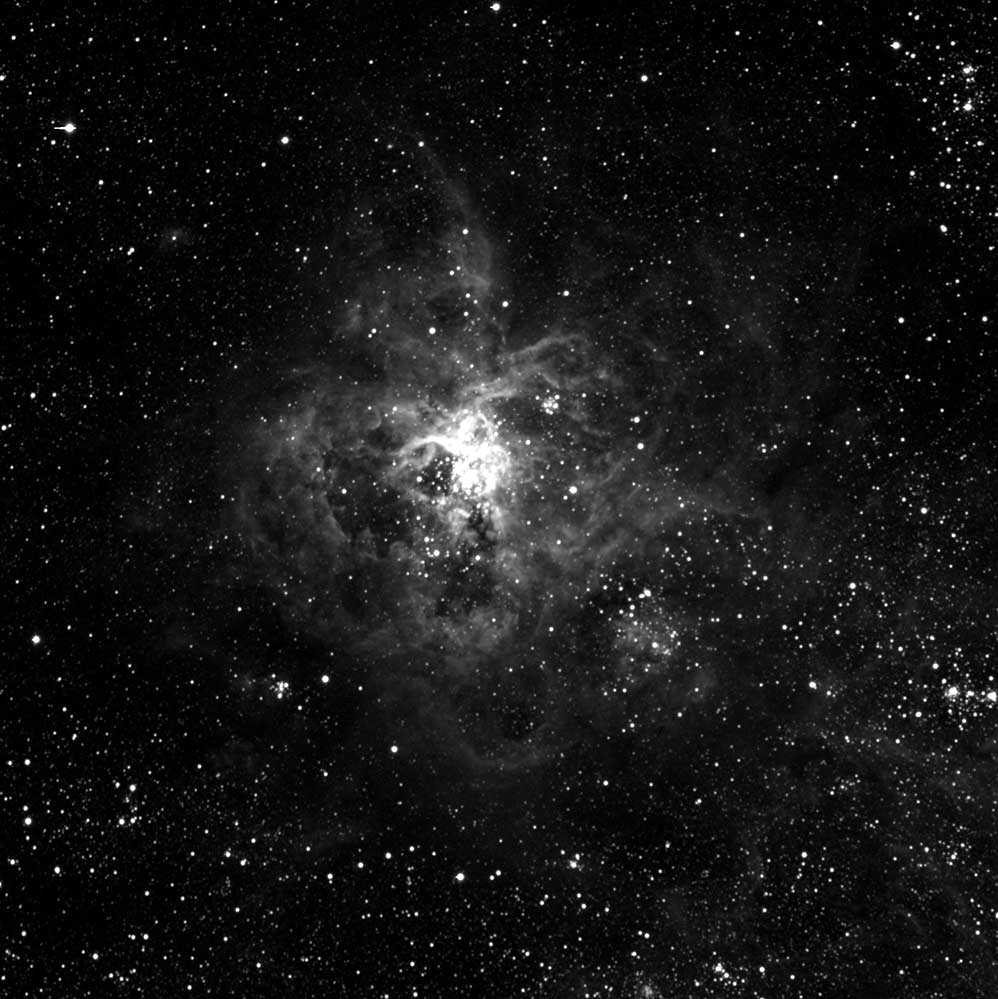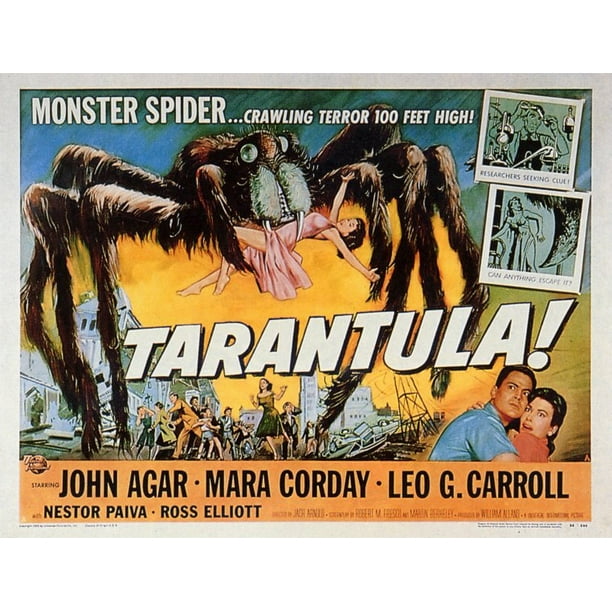
Posted on 09/06/2022 1:13:53 PM PDT by Red Badger

Swirling reds, whites, and light yellows mix around in front of a starry sky.
In this mosaic image stretching 340 light-years across, Webb’s Near-Infrared Camera (NIRCam) displays the Tarantula Nebula star-forming region in a new light, including tens of thousands of never-before-seen young stars that were previously shrouded in cosmic dust. The most active region appears to sparkle with massive young stars, appearing pale blue.
Credits: NASA, ESA, CSA, STScI, Webb ERO Production Team
Download the full-resolution, uncompressed version and supporting visuals from the Space Telescope Science Institute
Once upon a space-time, a cosmic creation story unfolded: Thousands of never-before-seen young stars spotted in a stellar nursery called 30 Doradus, captured by NASA’s James Webb Space Telescope. Nicknamed the Tarantula Nebula for the appearance of its dusty filaments in previous telescope images, the nebula has long been a favorite for astronomers studying star formation. In addition to young stars, Webb reveals distant background galaxies, as well as the detailed structure and composition of the nebula’s gas and dust.
At only 161,000 light-years away in the Large Magellanic Cloud galaxy, the Tarantula Nebula is the largest and brightest star-forming region in the Local Group, the galaxies nearest our Milky Way. It is home to the hottest, most massive stars known.
Astronomers focused three of Webb’s high-resolution infrared instruments on the Tarantula. Viewed with Webb’s Near-Infrared Camera (NIRCam), the region resembles a burrowing tarantula’s home, lined with its silk. The nebula’s cavity centered in the NIRCam image has been hollowed out by blistering radiation from a cluster of massive young stars, which sparkle pale blue in the image. Only the densest surrounding areas of the nebula resist erosion by these stars’ powerful stellar winds, forming pillars that appear to point back toward the cluster. These pillars contain forming protostars, which will eventually emerge from their dusty cocoons and take their turn shaping the nebula.
Webb’s Near-Infrared Spectrograph (NIRSpec) caught one very young star doing just that. Astronomers previously thought this star might be a bit older and already in the process of clearing out a bubble around itself. However, NIRSpec showed that the star was only just beginning to emerge from its pillar and still maintained an insulating cloud of dust around itself. Without Webb’s high-resolution spectra at infrared wavelengths, this episode of star formation-in-action could not have been revealed.

Swirls of white, blue, and pink against a starry background.
At the longer wavelengths of light captured by its Mid-Infrared Instrument (MIRI), Webb focuses on the area surrounding the central star cluster and unveils a very different view of the Tarantula Nebula. In this light, the young hot stars of the cluster fade in brilliance, and glowing gas and dust come forward. Abundant hydrocarbons light up the surfaces of the dust clouds, shown in blue and purple.
Credits: NASA, ESA, CSA, STScI, Webb ERO Production Team
Download the full-resolution, uncompressed version and supporting visuals from the Space Telescope Science Institute
The region takes on a different appearance when viewed in the longer infrared wavelengths detected by Webb’s Mid-infrared Instrument (MIRI). The hot stars fade, and the cooler gas and dust glow. Within the stellar nursery clouds, points of light indicate embedded protostars, still gaining mass. While shorter wavelengths of light are absorbed or scattered by dust grains in the nebula, and therefore never reach Webb to be detected, longer mid-infrared wavelengths penetrate that dust, ultimately revealing a previously unseen cosmic environment.
One of the reasons the Tarantula Nebula is interesting to astronomers is that the nebula has a similar type of chemical composition as the gigantic star-forming regions observed at the universe’s “cosmic noon,” when the cosmos was only a few billion years old and star formation was at its peak. Star-forming regions in our Milky Way galaxy are not producing stars at the same furious rate as the Tarantula Nebula, and have a different chemical composition. This makes the Tarantula the closest (i.e., easiest to see in detail) example of what was happening in the universe as it reached its brilliant high noon. Webb will provide astronomers the opportunity to compare and contrast observations of star formation in the Tarantula Nebula with the telescope’s deep observations of distant galaxies from the actual era of cosmic noon.
Despite humanity’s thousands of years of stargazing, the star-formation process still holds many mysteries – many of them due to our previous inability to get crisp images of what was happening behind the thick clouds of stellar nurseries. Webb has already begun revealing a universe never seen before, and is only getting started on rewriting the stellar creation story.
The James Webb Space Telescope is the world's premier space science observatory. Webb will solve mysteries in our solar system, look beyond to distant worlds around other stars, and probe the mysterious structures and origins of our universe and our place in it. Webb is an international program led by NASA with its partners, ESA (European Space Agency) and the Canadian Space Agency.
Media Contacts: Laura Betz Goddard Space Flight Center, Greenbelt, Md. 301-286-9030 laura.e.betz@nasa.gov
Christine Pulliam Space Telescope Science Institute, Baltimore, Md. 410-338-4366 cpulliam@stsci.edu
Last Updated: Sep 6, 2022 Editor: Jamie Adkins
WEBB PING!..................
Cosmic Tarantula. Didn’t they open for Big Brother and the Holding Company.
I think that was Moby Grape......................😁
Hat’s off to Chelsea’s dad.
Chelsea’s dad, Webb Hubble.

Makes me glad to have survived long enough to see these things...
(Although there was a 1952 barroom brawl in Yokosuska while on R&R that I ended up seeing the same type of view...)
My goal (103) is to be here for the next two encounters (2029 & 2036) with Apophis AND the next big telescope (Nancy Grace Roman-WFIRST)...

Just what we need. Tarantulas from outer space.
That’s the lesser-known Woody Nebula.
A stepped on spider?

Tarantulas are actually quite docile creatures... 😉
Apparently quite amorous too.
We’ll call it the Anthony Weiner Nebula...........................
The Anthony Weiner Nebula.......................
Disclaimer: Opinions posted on Free Republic are those of the individual posters and do not necessarily represent the opinion of Free Republic or its management. All materials posted herein are protected by copyright law and the exemption for fair use of copyrighted works.